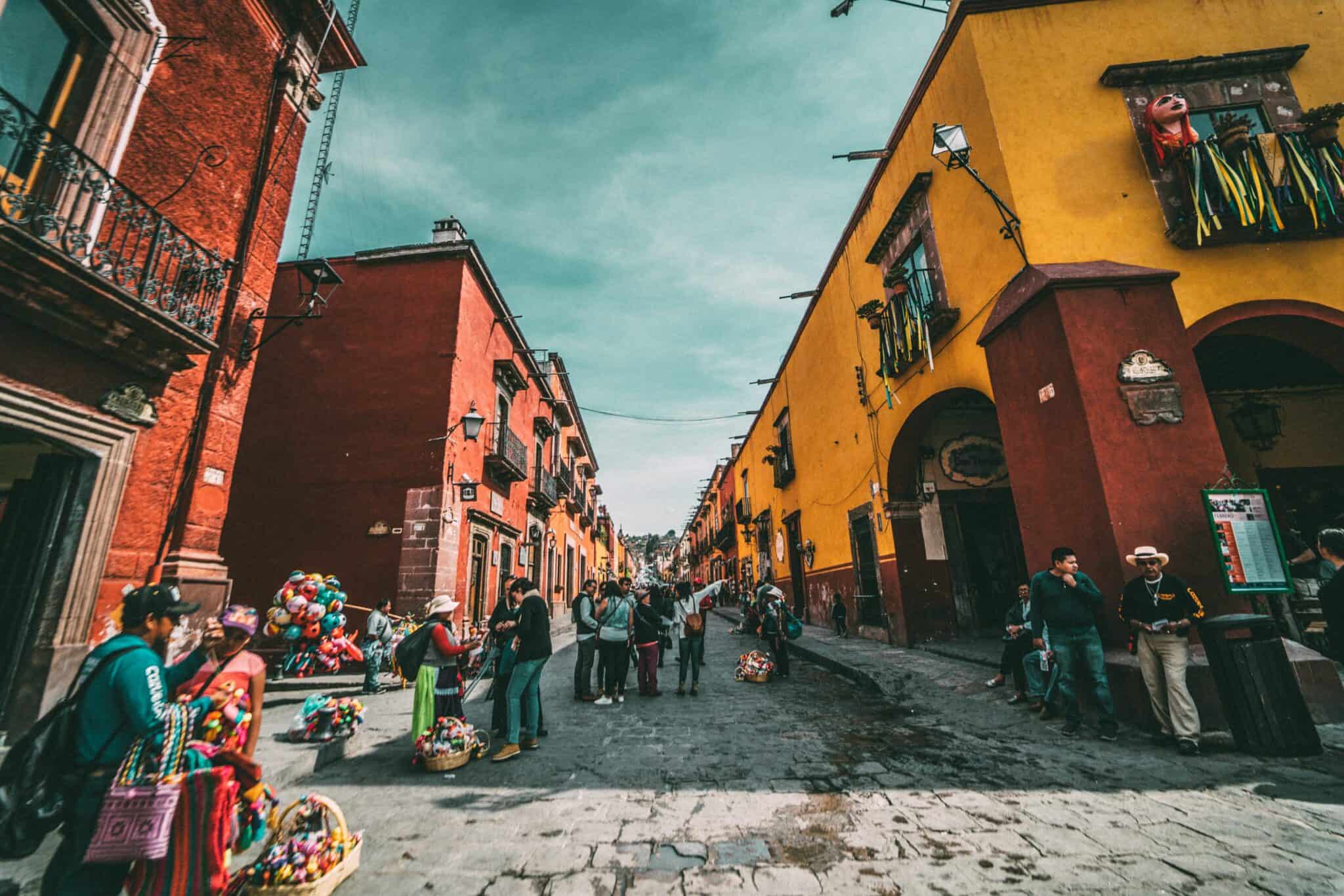Maxwell Ulin is a student at Harvard Law School.
Last month, U.S. trade authorities filed a complaint with Mexican officials to address labor violations at a major Panasonic auto plant in Mexico. The petition marks the third U.S. labor rights complaint against Mexico under the new US-Mexico-Canada Agreement (USMCA), which established new measures to ensure that Mexico follows through on promised union law reforms.
Just as labor activism sweeps the U.S., in Mexico domestic reforms and new trade measures have together created conditions for the country’s own labor rights revolution. As U.S. officials continue to support Mexican labor organizing through the USMCA, American labor experts ought to take a close look at the unprecedented legal framework being adopted by their southern neighbor.
National Context
To understand Mexico’s reforms, it’s important to note that Mexican labor rights challenges differ profoundly from American ones. While 16-20% of Mexican workers are unionized, including 90% in the industrial sector, in reality, 80-90% of Mexican collective bargaining agreements (CBAs) are negotiated by company-dominated unions and approved without worker consent. These company unions — often dubbed “protection” or “charro”unions — typically sign sweet-heart CBAs before workers are even hired and operate (often violently) to suppress legitimate organizing. While the party dictatorship that had fostered this system left power over 20 years ago, Mexico has done little until recently to change it.
Domestic Reforms
Enter la reforma laboral. After years of international pressure, Mexican officials promulgated a series of comprehensive labor reforms in 2019. Put simply, la reforma sets out three goals: (1) establish a democratic unionization process; (2) address corruption in the labor adjudication system; and (3) eradicate the charro union model. To those ends, the new law establishes the following:
- The Certificate System: Previously, Mexican law permitted unions to negotiate CBAs with employers regardless of worker support, allowing protection unions easily to take over the workplace. Under la reforma, unions only may negotiate upon receipt of a government-issued “certificate of representativeness”, which requires submission of a petition evidencing at least 30% support among relevant workers. If another union challenges the petition through its own showing within 13 days of the original submission, labor officials will hold an NLRB-style election called a recuento to select between them. Otherwise, labor authorities award the certificate automatically — effectively operating a turbo-charged card-check system.
- Independent Courts & Agencies: Prior to la reforma, Mexico employed a network of local administrative agencies to resolve labor disputes. These bodies, known as conciliation and arbitration boards (CABs), were dominated by political appointees and gained a reputation for corruption and pro-charro sentiment. La reforma replaces CABs with a system of labor courts with greater political insulation and a new independent civil service agency to handle administrative matters.
- Employer Prohibitions: To quash company unionism, la reforma bans employers from:
- Dominating/interfering in union affairs;
- Providing support to a union outside of benefits negotiated in the CBA;
- Voicing their opinions regarding a CBA ratification vote;
- Acting or speaking in favor of one union over another;
- Undermining workers’ right to a “personal, free, direct, and secret” union vote; or
- Discriminating against a worker for his or her union affiliation or lack thereof, including a worker’s decision to pay or not to pay dues to a given union.
Many of these reforms draw from provisions of U.S. law, such as NLRA § 8(a)(2) and LMRA § 302, which helped uproot American company unionism. Quite controversially, the last of these reforms, enabling workers to opt out of dues, effectively renders Mexico right-to-work.
- Union Regulations: Just as importantly, la reforma also requires that unions:
- Refrain from discriminating against workers for their union affiliation or lack thereof;
- Ratify all post-reforma CBAs through a majority worker vote prior to implementation;
- Ratify all holdover, pre-reforma CBAs through a majority worker vote before May 1, 2023;
- Submit all ratified CBAs to federal labor authorities prior to implementation (to be published online);
- Refrain from interfering in workers’ right to a “personal, free, direct, and secret” vote on union-related matters;
- Hold membership meetings or distribute written communiques to members reporting on the use of union funds every six months;
- Hold regular, democratic union leadership elections; and
- Ensure proportional gender representation on union leadership boards.
Together, these changes are spurring considerable labor upheaval. This is particularly thanks to the law’s contract ratification provisions; in an effort to extinguish charro CBAs — and thus charro unions — la reforma requires that over 600,000 existing contracts be approved by workers before May 2023 to remain valid. Currently, observers estimate that only about 2% of CBAs will likely be ratified in time. Implementation is also uneven, with Mexico delaying enactment for about a third of its states until this October.
Transnational Measures
As those familiar with Mexican law know, corruption and institutional decay often undermine the country’s ambitious legal guarantees. For this reason, new transnational protections under the USMCA are likely just as important to empowering workers as la reforma itself.
The most important labor provisions appear in Annex 31-A and 31-B of the agreement, which establish the Facility-Specific Rapid Response Labor Mechanism (RRLM). Under the RRLM, trade officials from party countries can trigger a multi-stage investigatory process to address violations of the rights to organize and collectively bargain suspected in other party nations.
Unlike past trade measures, the RRLM focuses on addressing individual labor violators, such as unions and employers, as opposed to governments. Rather than bringing complaints against each other for failure to enforce or investigate violations, countries can initiate independent investigatory and remedial proceedings under the RRLM against “covered facilities” (basically, workplaces engaged in international commerce) where violations are committed in the opposing country. Although the RRLM applies very limitedly in the U.S. context — Mexico can only bring claims against U.S. facilities to uphold enforced NLRB orders — in Mexico, any substantive violation of la reforma is fair game, even when charges haven’t been brought before domestic authorities. Each stage of the RRLM is also time-bound, with clear consequences when party governments fail to act. The result is a uniquely rigorous dispute-resolution system that is independent of domestic officials and usually yields some form of redress within 112 days if allegations are confirmed.
Furthermore, trade penalties under the RRLM can be economically devastating for offenders. These range from suspension of preferential tariff treatment to additional product sanctions — as well as complete import blockades for certain repeat offenders. With about 80% of Mexican exports destined for the U.S., businesses could face disastrous consequences for violating la reforma. Even when facing an often-ineffective Mexican justice system, then, employers possess strong compliance incentives.
So far, applications of the RRLM have yielded promising results. Earlier complaints filed against a major GM plant in Guanajuato and a Tridonex facility on the U.S. border resulted in swift, negotiated settlements that undermined charro unionism and helped facilitate subsequent democratic unionization. At Panasonic, workers voted overwhelmingly to elect a new, democratic union over the charro incumbent just days after the complaint, which may have helped discourage union election violations due to increased international scrutiny.
To be sure, Mexican labor law leaves much to be desired, particularly as authorities struggle with implementation. Nonetheless, the confluence of domestic legal change and new transnational protections creates greater opportunity to empower workers and improve labor conditions than at any time since Mexico’s democratization. As American labor advocates look to forge solidarity abroad, developments in Mexico offer an exciting chance to stem the global race the bottom and uplift workers on both sides of the border.










Daily News & Commentary
Start your day with our roundup of the latest labor developments. See all
December 22
Worker-friendly legislation enacted in New York; UW Professor wins free speech case; Trucking company ordered to pay $23 million to Teamsters.
December 21
Argentine unions march against labor law reform; WNBA players vote to authorize a strike; and the NLRB prepares to clear its backlog.
December 19
Labor law professors file an amici curiae and the NLRB regains quorum.
December 18
New Jersey adopts disparate impact rules; Teamsters oppose railroad merger; court pauses more shutdown layoffs.
December 17
The TSA suspends a labor union representing 47,000 officers for a second time; the Trump administration seeks to recruit over 1,000 artificial intelligence experts to the federal workforce; and the New York Times reports on the tumultuous changes that U.S. labor relations has seen over the past year.
December 16
Second Circuit affirms dismissal of former collegiate athletes’ antitrust suit; UPS will invest $120 million in truck-unloading robots; Sharon Block argues there are reasons for optimism about labor’s future.